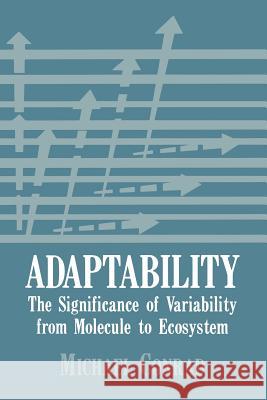Adaptability: The Significance of Variability from Molecule to Ecosystem » książka
topmenu
Adaptability: The Significance of Variability from Molecule to Ecosystem
ISBN-13: 9781461583295 / Angielski / Miękka / 2012 / 408 str.
Kategorie:
Kategorie BISAC:
Wydawca:
Springer
Język:
Angielski
ISBN-13:
9781461583295
Rok wydania:
2012
Wydanie:
Softcover Repri
Ilość stron:
408
Waga:
0.54 kg
Wymiary:
22.86 x 15.24 x 2.13
Oprawa:
Miękka
Wolumenów:
01
Dodatkowe informacje:
Wydanie ilustrowane











